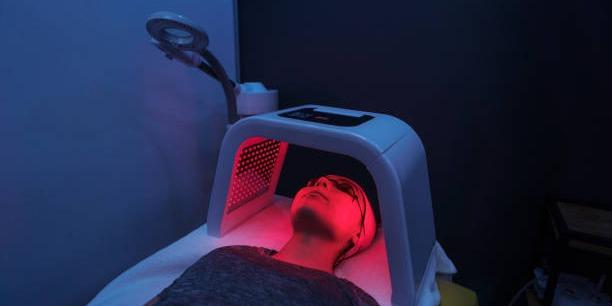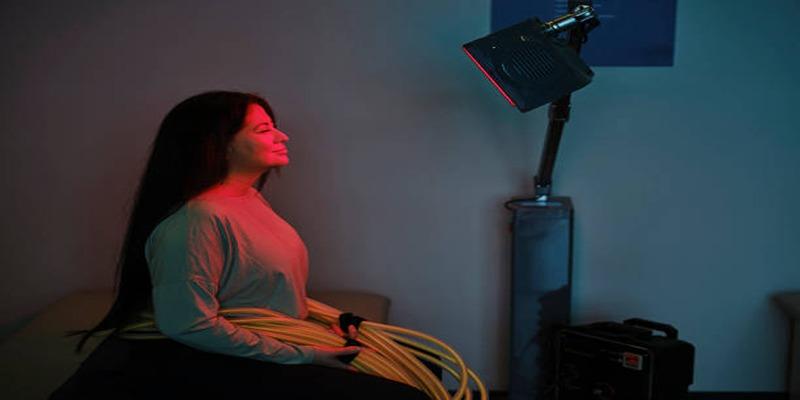Considering Red Light Therapy for Your Skin? Essential Insights
Jul 11, 2024 By Madison Evans
Red Light Therapy (RLT) has garnered attention as a revolutionary skin treatment promising a myriad of benefits. Originally developed to expedite wound healing in astronauts, RLT involves exposure to low-wavelength red light, purportedly enhancing skin health through the stimulation of cellular regeneration. This non-invasive treatment has been embraced for its potential to reduce wrinkles, diminish scars, and alleviate inflammation, making it a popular choice among those seeking a youthful glow. As interest in holistic and non-surgical skin treatments rises, understanding the science, effectiveness, and best practices of Red Light Therapy becomes crucial. This guide aims to provide you with essential insights into how RLT works and whether it might be a beneficial addition to your skincare regimen.
Benefits of Red Light Therapy
Red Light Therapy offers various advantages for skin health and overall well-being. Below, we break down the key benefits in detail:
1.Improved Skin Appearance
RLT is renowned for its ability to enhance the skin's appearance by promoting collagen production, which gradually reduces the visibility of fine lines and wrinkles. This increased collagen also helps improve skin elasticity, giving the face a firmer, more youthful look.
2.Reduced Inflammation
One of the most beneficial aspects of Red Light Therapy is its potential to reduce inflammation. By stimulating blood flow and cellular repair, RLT can help alleviate symptoms of chronic conditions such as acne, eczema, and psoriasis, making it a versatile option for skin health.
3.Accelerated Healing
Red Light Therapy has been shown to speed up the healing process for wounds and scars. The light penetrates deep into the skin layers, enhancing cell proliferation and tissue repair. This makes it an excellent treatment option for post-surgical recovery or injury-related scars.
4.Enhanced Mood and Energy Levels
Beyond skin benefits, RLT has also been linked to improved mood and energy levels. The therapy stimulates the mitochondria, often known as the powerhouse of the cell, leading to enhanced ATP production. This boost in cellular energy can enhance overall vitality, contributing to better mental and physical health.
5.Non-Invasive and Painless
RLT is a non-invasive, painless procedure that provides a convenient alternative to more aggressive skin treatments. With little to no downtime, you can undergo sessions without significant disruptions to your daily routine, making it an accessible option for busy lifestyles.
How It Works?
Red Light Therapy utilizes specific wavelengths of red light to penetrate the skin and stimulate various cellular processes. Heres a breakdown of how it works:
- Wavelength Penetration: Red light typically ranges from 630 to 700 nanometers, which allows it to penetrate the epidermis and reach the deeper layers of the skin. This penetration enables the light to affect the cells directly by boosting their energy production.
- Cellular Energy Production: The red light stimulates the mitochondria in the cells, increasing the production of Adenosine Triphosphate (ATP). ATP is the primary energy carrier in all living cells, and its enhanced production supports faster cell turnover and repair.
- Collagen and Elastin Stimulation: The energy provided by the increased ATP production promotes the synthesis of collagen and elastin. These proteins are essential for maintaining skin structure and elasticity, leading to a reduction in wrinkles and improvement in skin firmness.
- Anti-Inflammatory Effects: Red light has been shown to decrease cytokine levels, which are involved in the inflammatory response. Lower cytokine levels result in reduced inflammation and improved overall skin health.
- Cytoprotective Effects: This therapy also helps in promoting cytoprotective effects, where the cells are better protected from damage and stress. This attribute aids in faster recovery from injuries and environmental damage.
- Photobiomodulation: This process involves the use of light to modulate cellular functions. Red Light Therapy, as a form of photobiomodulation, can enhance cell viability and growth, contributing to various therapeutic benefits, from wound healing to mood enhancement.
Safety and Side Effects
Red Light Therapy is generally considered safe for most individuals when used appropriately. However, it is essential to be aware of potential side effects and contraindications. Common side effects are minimal but can include temporary redness, tightness, or irritation in the treated area. These effects are usually mild and resolve quickly without intervention.
To ensure safety, it is crucial to follow recommended guidelines regarding exposure time and frequency. Overuse of RLT can potentially lead to skin damage, so adhering to specified protocols is important. Additionally, individuals with photosensitive conditions or those taking medication that increases light sensitivity should consult a healthcare professional before undergoing RLT.
Those interested in RLT should also verify the quality and safety standards of the devices being used, as not all red light therapy products are created equal. Investing in a highly-rated, FDA-approved device can help mitigate risks and ensure a safer treatment experience. Always consult with a dermatologist or skincare professional to tailor treatment to your specific needs and conditions.
Choosing the Right Device
Selecting the right Red Light Therapy device can be a pivotal step in achieving optimal results.
Device Types and Their Uses
There are various types of RLT devices, each suited to different needs and preferences. Handheld devices are ideal for targeting small, specific areas, offering precision and portability. Full-body panels, on the other hand, are designed for broader treatment and can cover extensive skin areas at once, making them suitable for comprehensive therapy sessions. Mask-style devices fit comfortably over the face and are tailored for facial skin treatment, addressing wrinkles, acne, and pigmentation.
Wavelength Specifications
Understanding wavelength specifications is crucial as different wavelengths penetrate the skin to varying depths, offering distinct benefits. Typically, red light ranges from 630 to 700 nanometers. Devices in the 630-660 nm range are effective for surface-level treatments such as skin tone improvement and collagen production. Devices with wavelengths closer to 700 nm can penetrate deeper tissues, providing benefits for muscle recovery and reduction of deeper wrinkles.
Power Output and Treatment Time
The power output of an RLT device determines its efficiency and the required treatment time. Higher-powered devices emit more light energy, which can reduce the duration of each session while delivering effective results. For instance, a device with a power output of 100 mW/cm can offer substantial benefits in as little as 10-20 minutes per session, whereas a lower-powered device might require longer exposure to achieve the same effects.
Safety Certifications and Standards
Quality assurance is paramount when choosing an RLT device. Look for products that have FDA clearance or CE certification, which indicate adherence to safety and performance standards. Additionally, check whether the device has been tested for eye protection if integrated LED lights are used. Reliable brands often provide extensive information about their safety standards, helping you make an informed decision.
Price and Warranty
Price can vary significantly among RLT devices, influenced by features, brand reputation, and build quality. While higher-end devices often come with advanced features and robust construction, there are affordable options that do not compromise on effectiveness. It is also essential to consider the warranty offered by the manufacturer. A longer warranty period signifies the companys confidence in the product's durability and reliability, offering you added peace of mind.
User Reviews and Testimonials
Researching user reviews and testimonials can provide valuable insights into the devices performance and user satisfaction. Look for detailed feedback on aspects such as ease of use, effectiveness, and customer service. Real-world experiences can highlight potential issues and help you set realistic expectations regarding the results and maintenance of your chosen device.
Ideal Treatment Frequency
Determining the correct frequency of red light therapy sessions is essential for maximising results while avoiding overuse. Typically, treatments are recommended two to three times per week for beginners, gradually tapering to once a week as maintenance once desired results are achieved. Each session should last between 10 to 20 minutes, depending on the device's intensity and your skin type. Consistency is key; regular sessions yield better results over time. Monitoring skin changes and adjusting frequency based on individual response will help maintain optimal skin health.
Conclusion
Red Light Therapy represents a significant advancement in non-invasive treatments for a variety of skin and health concerns. Its broad spectrum of applications, ranging from skin rejuvenation to muscle recovery, underscores its versatility and efficacy. When properly utilized, RLT offers a safe and effective way to enhance well-being without requiring surgical interventions or pharmaceuticals. To achieve the best outcomes, it is crucial to select a high-quality device, adhere to recommended treatment protocols, and consult healthcare professionals as necessary. As with any therapeutic modality, individual results may vary, so patience and consistent application are key. By integrating Red Light Therapy into your routine thoughtfully, you can unlock its full potential and enjoy the visible improvements in your skin and overall health.







